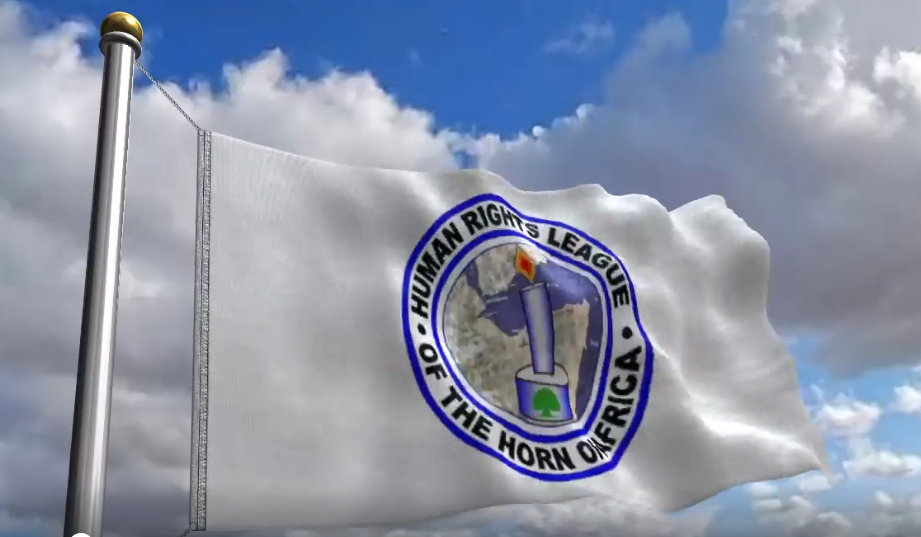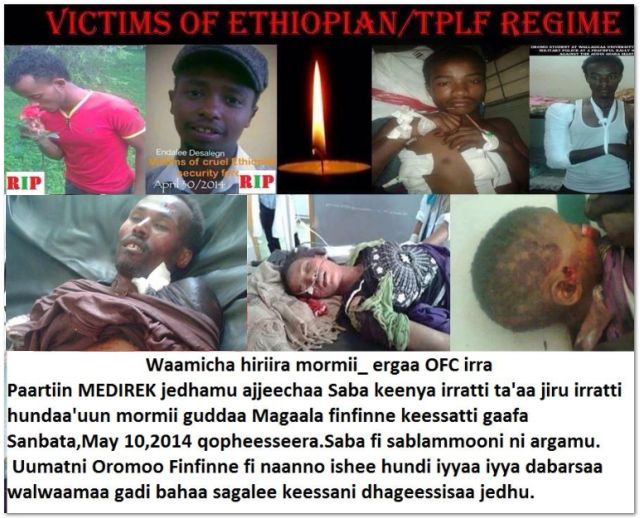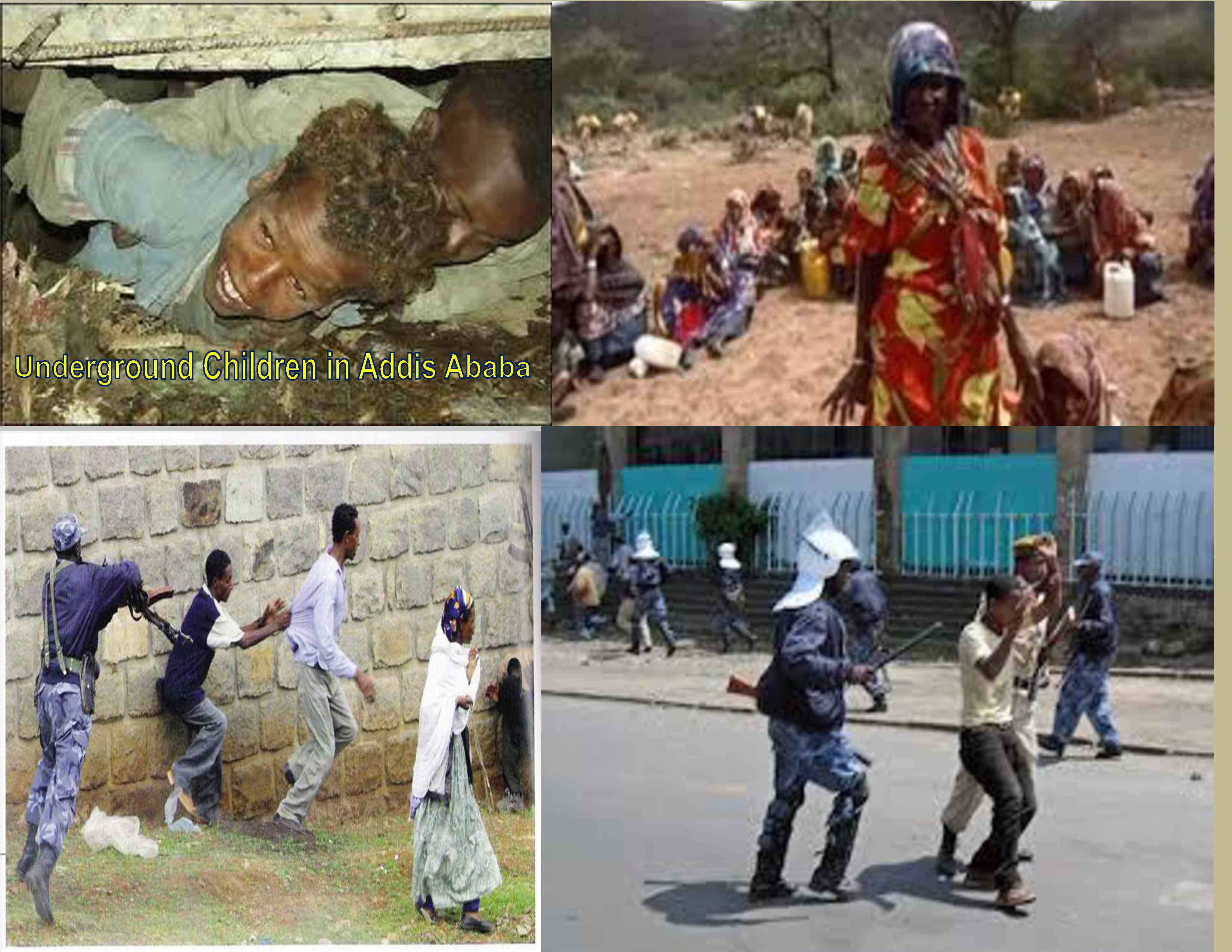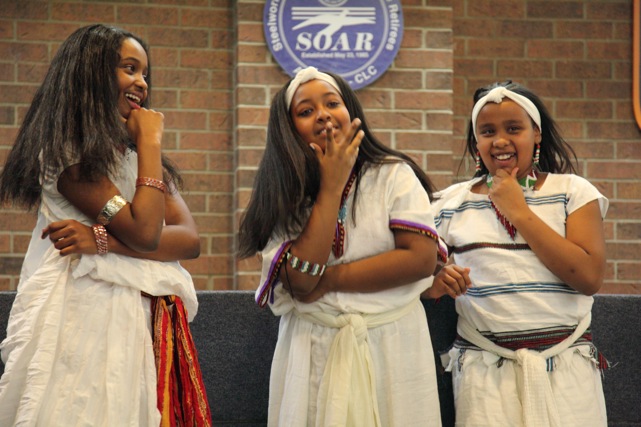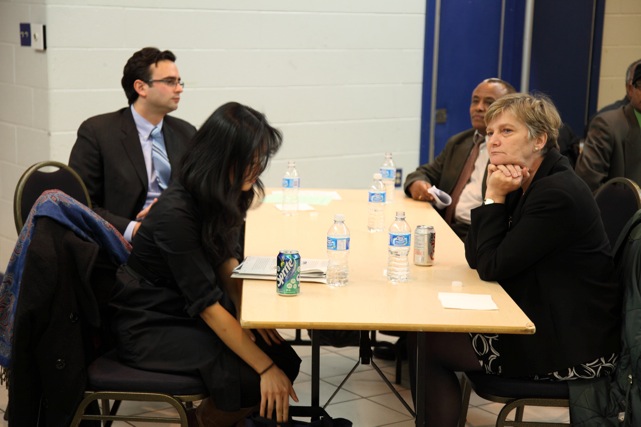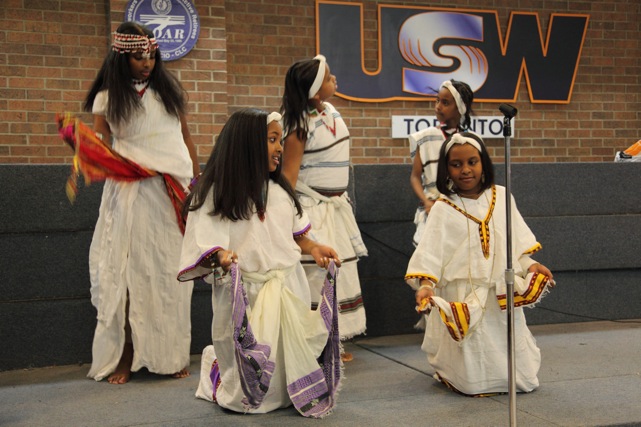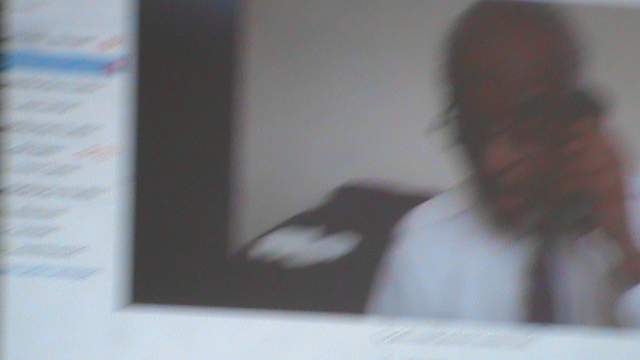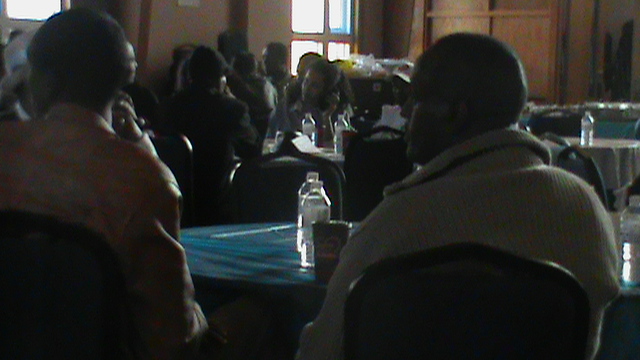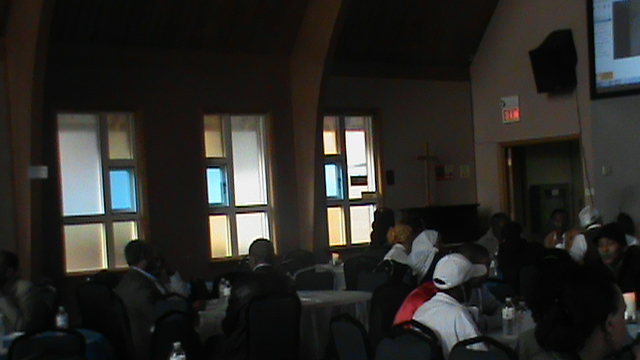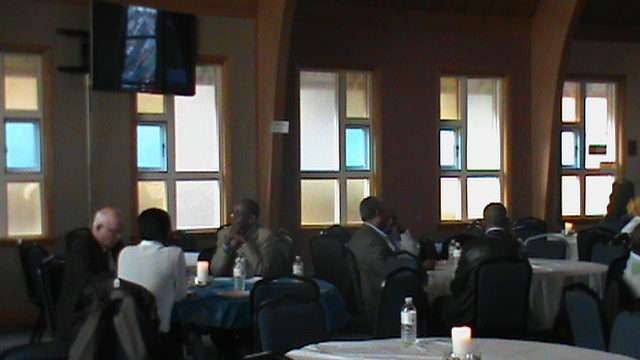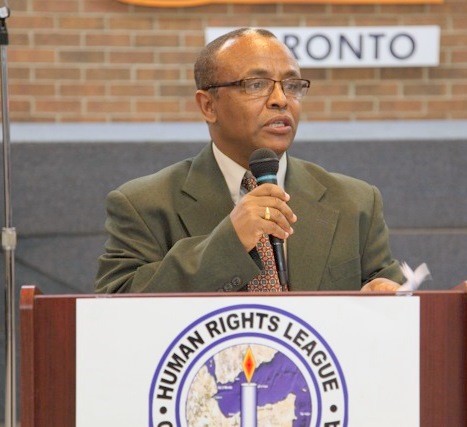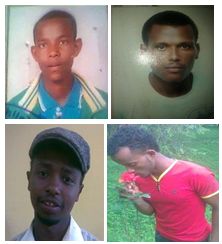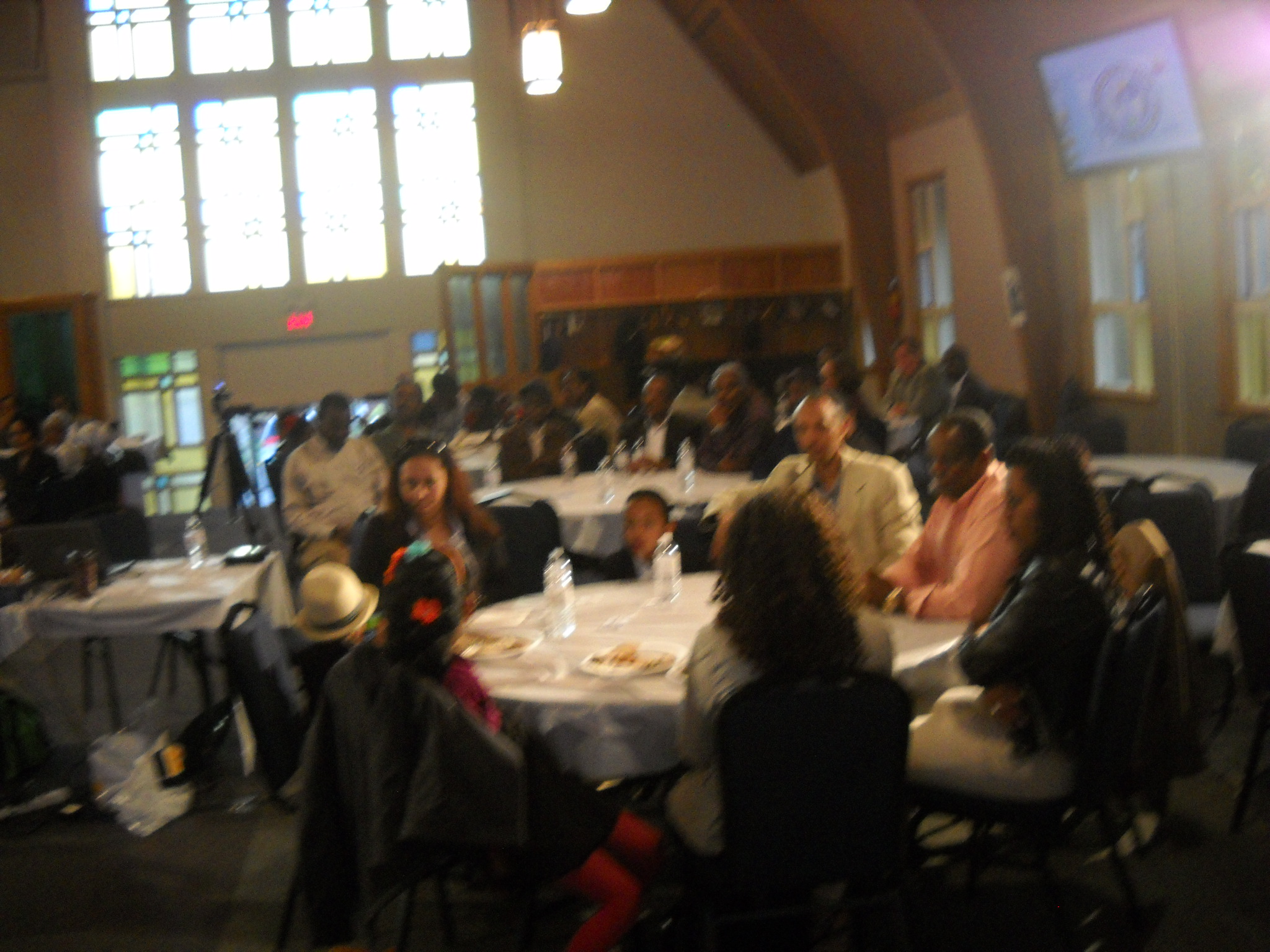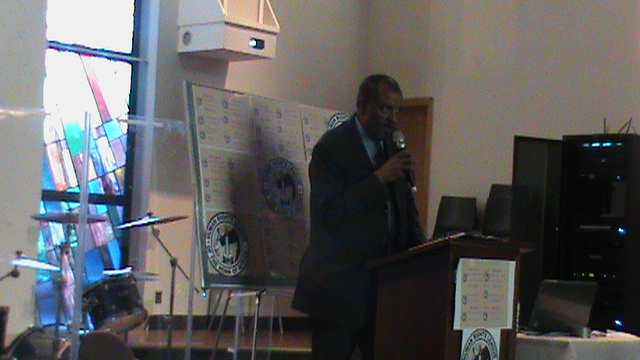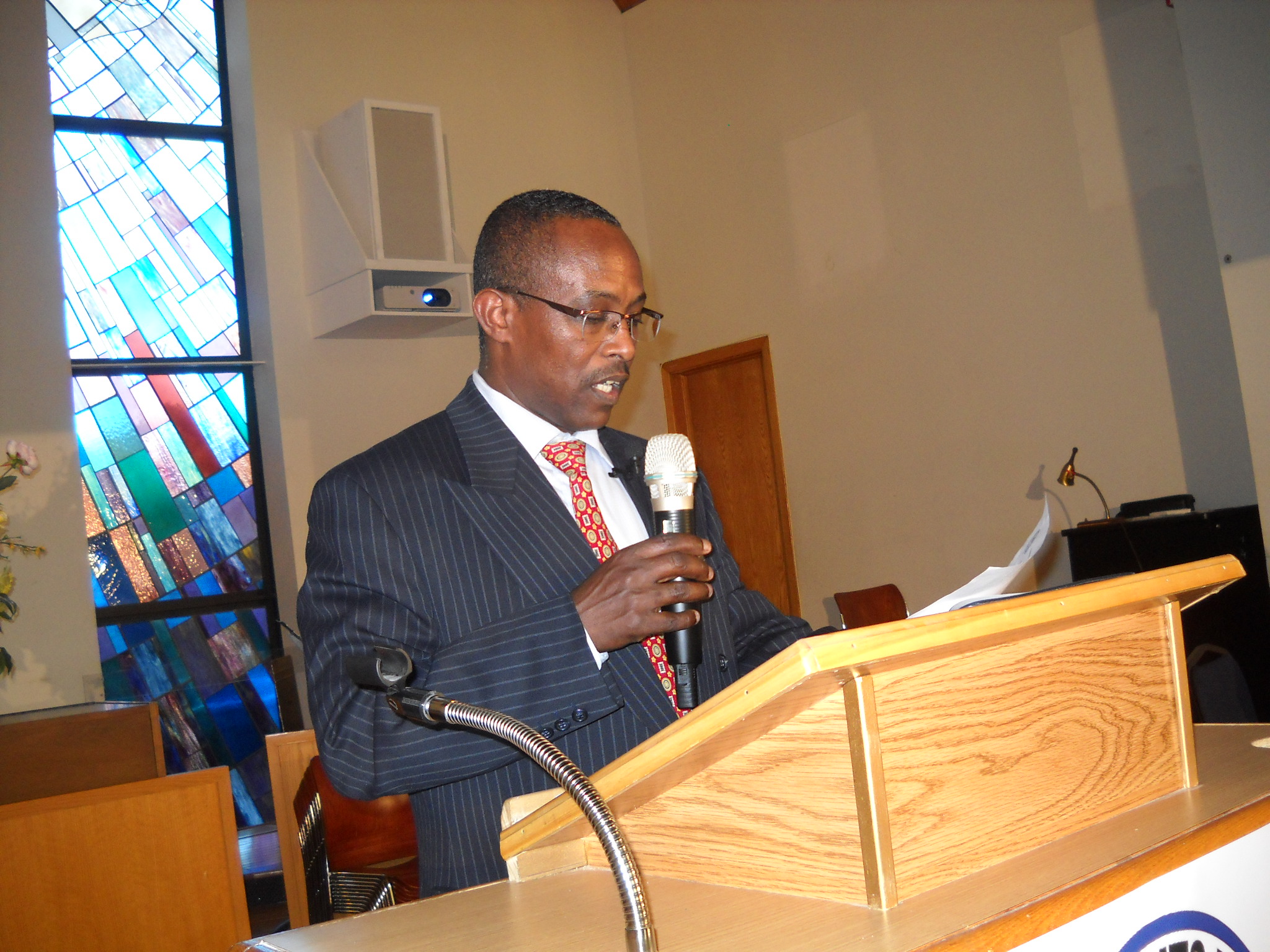COLONIAL TRAUMA, COMMUNITY RESILIENCY AND COMMUNITY HEALTH DEVELOPMENT
The Case of the Oromo people in Ethiopia
Begna F. Dugassa Phd
INTRODUCTION
In human history it is well known that among the many people who have lived in highly stressful social conditions, most of them are likely to die prematurely, live in poverty, and experi- ence other social adversities in their lives (Lang & Dickason,
1996). A few of them successfully overcome these adversities and are able to lead competent lives. Those who overcame these difficulties are considered resilient. However, it has not been clearly understood how these individuals and communi- ties overcame the stress and adversities while the others did not. To understand how some communities overcome stress and violence and lead successful lives, it is important to enquire into the conditions in which the community members lived and identify the circumstances that are common to them and take a close look at how these groups rebuild healthy commu- nity following adversity. In addition, one needs to look at the social conditions that are essential for resiliency and if such conditions can be replicated in other places and look for the building blocks of community resiliency.
This paper has emerged from the presentation I made in
2004 in the conference of the Canadian Association for Studies in International Development (CASID). In this paper, using primary and secondary data, I take a close look to understand what those who overcome stress and trauma have in common, and identify the necessary social conditions for resilience. In doing so, I make an effort to figure out whether or not the Oromo people’s healing and resiliency could be cultivated.
It is well known that lived circumstances are a factor in predicting achievements. Researchers in public health
identified the social determinants of health (Raphael, 2004; Farmer, 2003) and the conditions that help protect people who might be at risk of develop- ing health problems. Our knowledge in this area suggests that negative life experiences or living conditions are linked to poor health. In the past, scien- tists had closely looked into the biological conditions that make the difference between healthy survivors and those who succumb to diseases. They discov- ered antibodies for a number of disorders (Bock & Sabin, 1997), and were able to develop vaccinations against deadly infectious diseases. From the time of Virchows work in 1848 in Upper Silesia, a region predominantly Polish but ruled by Germany, the pathogencity of colonial power relations and unhealthy social relations has been well known (Taylor & Rieger, 1985). However, there is still a lack of understanding regarding community healing and resiliency processes. Recognizing the importance of individual and community resil- iency or healing processes is recently capturing the imagination of research- ers and policy makers.
The vulnerability of a community to a given risk is a function of its sensitivity to a potential threat and its adaptive capacities (Farmer, 1999). For example, it is well known that community social order is central to community resiliency. If there was no social order, an individual’s selfish desire would run wild and such societies would lead disrupted life condi- tions. To prevent this, society has to be empowered in order to establish order in the community. However, under colonial rule where justice is denied, poverty follows, and when the State is organized to oppress, con- spire, rob and degrade, the community cannot maintain any social order and heal itself.
The study of community resiliency and healing begins with the ’diagno- sis’ of clear accomplishments or resiliency despite adversity and violence faced by a community. This paper examines resiliency conditions in Oromia, touching on the social and economic problems that the Oromo people face. Oromia is environmentally prosperous, however, war, wide spread human right violations (Human Rights Watch, 2006), famine, HIV/AIDS, malaria epidemics and Iodine Deficiency Disorders (Dugassa, 2005, 2006) have rav- aged it. Part one of this paper introduces the concept of community resiliency or the healing process, collective violence and collective rights. Under this, I explore the necessary conditions that are vital for individuals and the com- munity to overcome adversity and develop better community health condi- tions. Part two of this paper examines the role played by individuals and community resiliency in community health development. Part three of this paper takes a close look at the presence or absence of resiliency conditions in Oromia. Capturing the experience and the realities with which the Oromo people have lived for over a century, this paper reveals the social and the economic problems and their root causes. Part four covers how and why resil- iency conditions have been hampered in Oromia. Here I examine the rela- tionship between the long-term effects of collective violence against the Oromo people and community resiliency. In part five, I discuss the ways that resiliency or healing conditions can be cultivated. The Oromo people are the single largest ethno-national group in the Horn of Africa. In studying the situation of Oromo people, this paper brings of light another dimension for the socio-economic and health problems such as famine, war and instability in the Horn of Africa.
OBJECTIVES
This paper has two major objectives. The first objective is to explore the known circumstances that foster resiliency and healing which should bring about fundamental understanding of the ways communities overcome stress or adversity and recover from collective violence. I am hopping that under- standing and identifying the social conditions that foster or deter resiliency would broaden our current knowledge and thinking. The second objective is to investigate the relationships between resiliency conditions and chronic and acute collective violence. In doing that, this paper intends to inquire into the underlying reasons why the Oromo people’s social conditions have been dete- riorating over time.
THEORETICAL CONCEPTS
To avoid ambiguity, I begin the study of resiliency with the introduction of theoretical concepts of community resiliency, trauma and collective violence. Understanding the ways collective trauma is inflicted and raising awareness about resiliency conditions are instrumental in setting policies that would fos- ter healing and resiliency.
RESILIENCY
Contemporary knowledge about resilience evolved in several stages. Initially the concept of resiliency emerged from physical and environmental science studies. In physical science, engineers were interested in functionality and durability of physical bodies as they completed a specific physical duty over a long period of time. For example, engineers are interested in the way springs and rubber maintain their elasticity while doing specific jobs, and they called this phenomenon resilience. Forestry applied the concept of resilience to describe how forests naturally recover from forest fire or log- ging. Later on the term resilience was used in human psychiatry. Psychiatry has been using the concept of resilience to understand how individuals over- come emotional and stressful events and lead healthy lives. Since individuals make a community, over time the term resilience came to describe the pro- tective mechanism and process that fosters community resilience and com- munity health development.
Valentine and Feinauer (1993) defined resilience as the ability to cultivate strength or return to original form or position after being bent. According to Gordon (1995) resilience is the ability to thrive, mature, and increase compe- tence in the face of adverse circumstances. The Resilience Alliance (see, the resilience Alliance) defined resilience as (a) the amount of disturbances a system can absorb and still remain within the same state or domain of attrac- tion (b) the degree to which the system is capable of self-organization (versus lack of organization or organization forced by external factors) and (c) the degree to which the system can build and increase the capacity for learning and adaptation.
Gordon (1995) has classified adversities into biological abnormalities, environmental obstacles and /or human made social realities. Adverse cir- cumstances may be chronic and consistent or severe and infrequent. Increas- ing research from the field of sociology has shown that most people can bounce back from stressful events, crises, and trauma and lead a successful life. The resiliency level of communities varies according to the social con- ditions in which they live. This suggests that community resiliency varies depending on the level of stress and types of adversities the community encountered and their preparedness for such events (Werner, 1994).
SOCIAL TRAUMA AND ADVERSITY
In this paper, trauma is a wound or injury or damage resulting from external force (s). It is known that a violent emotional blow has a lasting effect. This means that trauma could result from physical wounds or spiritual assault. Among colonized people, social trauma generally results from the exercise of colonial control over them through destructive, demoralizing, unjust, unwar- ranted and unlawful physical and epistemological violence.
Trauma can be acute or chronic. Traumas can vary in their severity, acuteness and onset duration (Masten, 1994). Some stresses are natural and others are socially constructed. Some stresses are short-lived and others are chronic, either persistent or often repeated or endured. The resilience of individuals and communities depends on the nature of these adversities. It is well known that communities better overcome acute, less severe adversities than chronic and severe traumas. Colonial traumas can be chronic if the communities have experienced it for several generations or acute if it is for a short term. In terms of magnitude, the colonial trauma that Oromo people experience can be categorized as severe and chronic trauma. For example, Abyssinians invaded Oromia in a bloody and protracted war from 1880s to
1900s (de Salviac, 1901/2005) and since then they have disregarded the rights of the Oromo people. They have employed physical force to kill, intim- idate, subdue and destabilize the social structures of the Oromo people. The Abyssinians functioned within their epistemology, thus, they did not consider that their actions were morally wrong.
COLONIAL TRAUMA—COLLECTIVE VIOLENCE
Colonialism is a collective violence and it constitutes a long-term physical occupation. Colonial power relations constitute socio-economic-political relationships in which a group of people effectively overruns the political, social, economic, cultural, territorial and ideological sovereignty of another people. The colonial territorial conquests are inspired by economic interests and spring from a belief in racial and cultural superiority. Thus, colonial pol- icies are designed to control political, economic, cultural and social affairs of the colonized people. Violation of the sovereignty and liberty of people, and the denial of their right to determine their own affairs are perpetuated at the collective level. Usually territorial conquests are followed by discriminatory racist social policies which promote and legalize racial-ethnic inequalities. Individuals are the ultimate victims, when the colonized people are catego- rized as inferior based on their skin color, ethnicity and culture and collec- tively deprived of their rights. This means colonialism and denial of collective rights is a form of collective violence. A WHO document (2002) defines col- lective violence as “political actions committed to advance a particular social and political agenda over the others”. Collective violence is committed by a group (s) or a state (s) against another distinct group (s). According to a document produced by the WHO (2002), collective violence could be physi- cal, sexual and psychological, and involve deprivation or neglect.
THE COLONIAL EXPERIENCE OF OROMO PEOPLE
Understanding history provides us a theoretical tool to critically glimpse the past, identify the wrong, and comprehend the need of the society and change
=================================================================
Voice against Torture – the Case of Ethiopia
Victims of Torture are still suffering
No Impunity for Torturers
Presented on;-Torture Abolition Survivors Support Coalition
Survivors Week – Washington DC, 23 – 29 June 2009
Presented By:- Garoma B. Wakessa HRLHA Executive Director
Human Rights League of the Horn of Africa/HRLHA
Introduction
Torture survivors are uniquely strong and amazing people. They endured and survived the most unthinkable acts of physical and psychological torture and showed the strength to reclaim their right to life once again.
As most of us have witnessed at different times in our lives, the vast majority are civilians who, until their incarceration and torture, had been living ordinary lives and had no relation with what they were suspected of and tortured. What happened to them left them and their loved ones in life of darkness.
Even though not all survivors bear visible scars or wounds on their bodies, all of them undoubtedly have heavy wound in their minds. Psychological torture, which never leaves noticeable scars or wounds behind, is the most widespread method in secret and illegal detentions in Ethiopia. Some torturers tend to favor psychological torture simply because it is easy to deny its occurrence and escape responsibilities; as it does not leave behind any physical signs, which makes it harder to verify and document.
In Ethiopia, torture survivors have no access to medical treatment. Most of them die after a while because of the lack of treatment. Another important point to note is that not all survivors are at the same level of mental state or stage of revival. Besides, there are no rehabilitation centers of torture survivors in Ethiopia. Almost all torture survivors in Ethiopia suffer from post-traumatic stress disorder (PTSD). Symptoms include flashbacks, severe anxiety, insomnia, nightmares, depression and memory loses.
It is important for journalists and human rights activists who come in contact with torture survivors to recognize their particularities and approach them with sensitivity and professionalism.
The United Nations Convention against Torture and Other Cruel, Inhuman or Degrading Tr
eatment or Punishment (10 December 1984) under article 2 clearly states the absolute prohibition of torture, and requires parties to take effective measures to prevent it in any territory under its jurisdiction.
Although this prohibition is absolute, “No exceptional circumstances whatsoever”, countries like Ethiopia have ignored the convention and practice the intentional infliction of extreme physical suffering on some non-consenting defenseless citizens.
Ethiopian Government Torture Survivors and Victims
- Credible domestic and International human Rights Organization including, US state department and EU member countries, have repeatedly confirmed that the Ethiopian Government is one of the top few countries who, in contrary to the UN convention against Torture and Other Cruel, Inhuman or Degrading Treatment or Punishment, uses torture for the purpose of obtaining information or a confession from her/him or a third person.
- Some recent Torture reports on Ethiopia
1. Amnesty International Report 2009, Human Rights Situation in Ethiopia,
2. Human Rights Watch, Ethiopian Events of 2008
3. Bureau of Democracy, Human Rights, and Labor
2008 Country Reports on Human Rights Practices
February 25, 2009
4. Human Rights League of the Horn of Africa/HRLHA and Others
Recent Torture Victims
The following are some of the many most recent torture victims in Ethiopia. These individuals, males and females, have been suffering either directly or indirectly from the practice of torture by Ethiopian authorities in the past. (Source: HRLHA periodical reports)
1. Mr. Abdulrashid;- The security agents subjected Mr. Abdulrahsid to such harsh torture to coerce him to confess that was a member of an opposition political organization, OLF in particular, and to reveal alleged secrets he knew about the Front. Mr. Abdulrashid died from the brutal torture inflicted on him on May 08, 2009.
Abdurashiid Ibraahim Aadam
2, Mr. Hassan Ibrahim Tuulee,(Photo not available) was a 57-year old businessman and a father of seven, who used to live in Baddanno Town in Eastern Hararge. He had been in and out of prison so many times since 1992 on the same alleged political grounds – that he was a member of opposition political organizations. Mr. Hassan Ibrahim died in prison on unspecified day in Fabruary, 2009 from harsh torture he too was subjected to while he was in prison. The possessions of Hassan Ibrahim, money, a car and other valuable items, were confiscated by members of the security forces of the Ethiopian government.
3. Ms Biraanee Dhufeeraa and Mr. Asfaw Banti were members of Oromo Federalist Movement (OFDM) killed in Kiltu Karra district of Western Wollega Zone of Oromia region on 21 December, 2005 by the security forces.
Iziqeel Gammaddaa
4. Abdulmalik was an Ethiopian refugee living in Somaliland. He was abducted by Ethiopian insurgents from the town of Hargessa and taken into a solitary confinement in a military camp in the border town of Bombasi . Abdulmalik was severely tortured with electric wire; and, as a result, died and thrown in to the bush in the night time. Abdulmalik fortunately survived the torture and emerged from the bush and fled to Hargessa.
Abdulmalik
5. Sheik Mohamed Kalif (photo not available) was an Ethiopian Oromo who had been in Somaliland for over 30 years. He recently traveled to Ethiopia to visit his relatives in Eastern Hararge, Kombolcha/Falana town. According to HRLHA reporter in Somaliland, Sheik Mohamed was killed by hanging by Ethiopian army, in a military camp found in the border town of Bombasi on his way back to Somaliland. Besides, Sheik Mohammed was severely tortured by the members of the Ethiopian army before he was killed by hanging, according to HRLHA reporter. The Ethiopian army in the area, who exrtrajudicially killed Sheik Mohamed Kalif, has been trying to convince the public that Shek Mohamed committed suicide
6.Abdala Osman Adam ,a 19 year old young man from Baddano District in Gara Mulata Region in East Hararge/Ethiopia was tortured and thrown in to the bush in October 2007and later found by friends.
7. Dirirsa Biqila, a fresh graduate of Law from Mekele Univeristy.
. Dirirsa Biqila,
Dirirsa was one of the fourteen Oromo students who have been denied their degrees and diplomas upon graduation from the same (Mekele) university for allegedly organizing what was termed as “OLF-affiliated anti-government movement” within the university. Dirirsa, who came to Addis Ababa immediately after the graduation in July 2006, was first kidnapped by unidentified men in civilian clothes on November 30 2006 around 2:00p.m from the area known as Megenanya in Addis Ababa. HRLHA reporter has later confirmed in an interview with Dirirsa that his kidnappers were government security forces. Dirirsa, after being kidnapped, was taken to an underground prison (handcuffed and blindfolded), where he was severely beaten up and tortured (please see the picture). Dirirsa told HRLHA reporter that he temporarily lost his consciousness as a result of the severe torture. After two days, he was taken to the Air Force base in Debrezeit/Bishoftu, where he was subjected to further torture and harassments. Then, Dirirsa was brought back to Addis Ababa and held at Lafto Sub-City police station before he was driven to and dumped in Walo Safar area in the Capital very early in the morning on December 5, 2006. Dirirsa Biqila, age 25 was born in West Wallaga/ Oromia .
Torture specialists
- Torture is often committed by security forces, soldiers, intelligence officers, prison guards or other agents of the Ethiopian Government. As any torture victim could imagine, these torturers were well trained not to prevent torture but to practice different mechanisms of torturing,
- Common torturing methods the Ethiopian Government agents apply include such practices as searing with hot irons, burning at the stake, electric shock treatment to the genitals, cutting out parts of the body, e.g. entrails or genitals, severe beatings, suspending by the legs with arms tied behind back, etc..all of these practices presuppose that the torturer has control over the victim’s body.
Reasons for the Torture
- Being a member and/or supporter of any opposition party,
- Those who fight for the freedom of opinion, journalists, human rights activists, university students, high school and university teachers.
When and where torturing takes place
- In Ethiopia, there are only few prison facilities known to the public. More than half of the total detainees in the country are kept in military camps, public offices, residential building (basements/under grounds).
Such detenees are always at risk of being tortured or even killed any time,
- Maikelawwi – the well known detention center is the center for the torture. In Maikelawi torturing usually take place after mid night after every detainee lies down to sleep.
Recommendations
§ The Ethiopian Government should sign and respect Convention against Torture and Other Cruel, Inhuman or Degrading Treatment or Punishment adopted and opened for signature, ratification and accession by General Assembly resolution 39/46 of 10 December 1984
- The government of Ethiopia should provide in its penal code for all forms of torture, fully incorporating all elements of the definition contained in article 1 of the Convention.
We recommend that the government of Ethiopia should establish machinery for a systematic review of interrogation
rules, methods and practices, particularly in police premises, in order to honour its commitments under article 11 of the
Convention.
- We recommend that, while paying particular attention to the protection of the rights of persons arrested and detained,
State party should intensify the educational, training and information programmes provided for in article 10 of the
Convention, for all the officials concerned.
- We recommend that the Ethiopian authorities should undertake and expedite serious investigations into the conduct of the police forces in order to establish the truth of the many allegations of acts of torture and, if the results of the investigations are positive, bring the persons responsible before justice; and issue and transmit to the police
specific and clear instructions designed to prohibit any act of torture. - We recommend that the government should allowed a neutral human right committee to make random visits tojails, custodies, detention centers and any other places where the authorities keep detainees.
- We recommend that the government of Ethiopia should give full statistical information about the number of detainees from the 1991 until 2009 as well as the number of those killed under torture.
- We recommend that the government of Ethiopia should compensate those families who lost their relatives under torture or through excessive force used by the police or security agents.
Thank You
END
